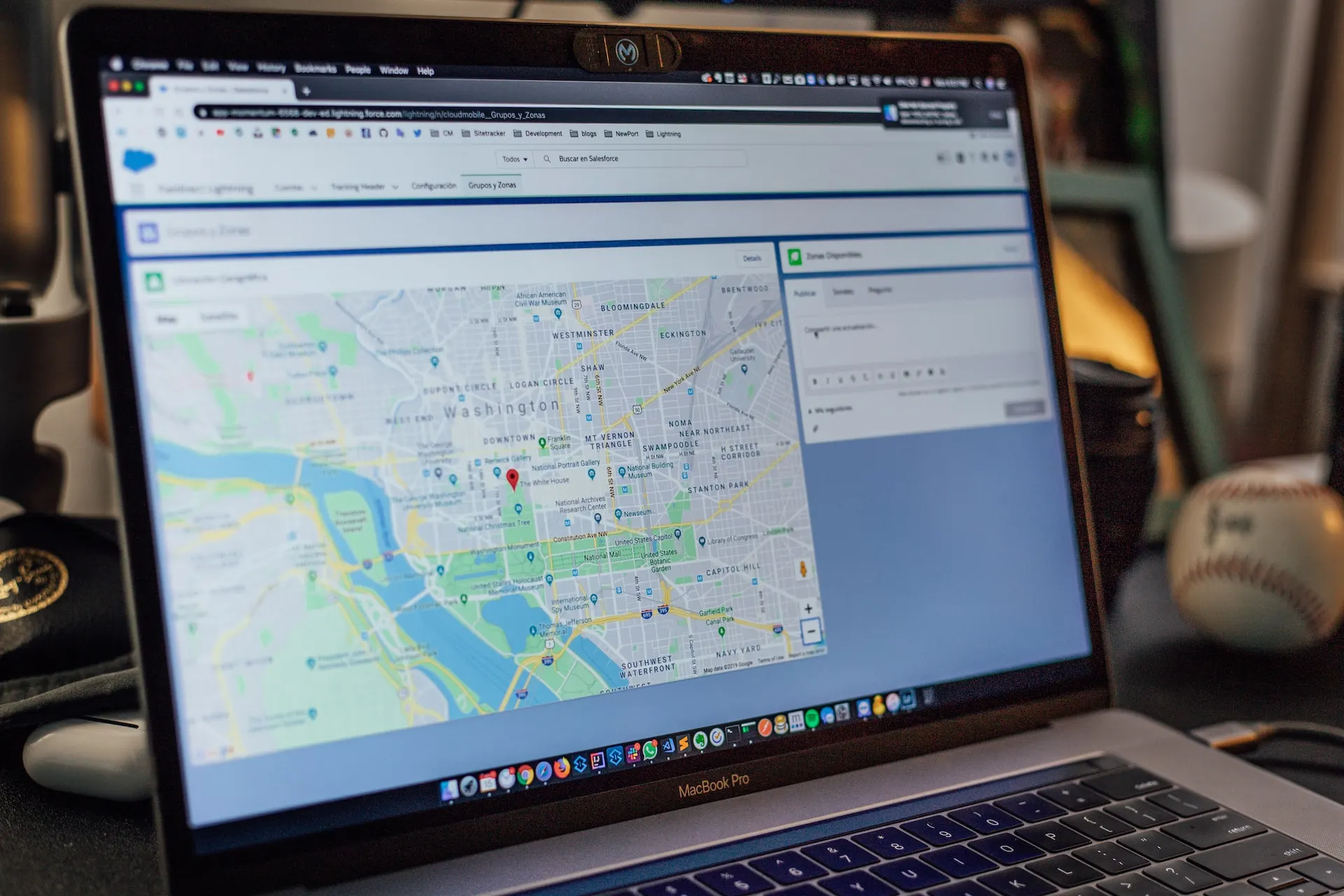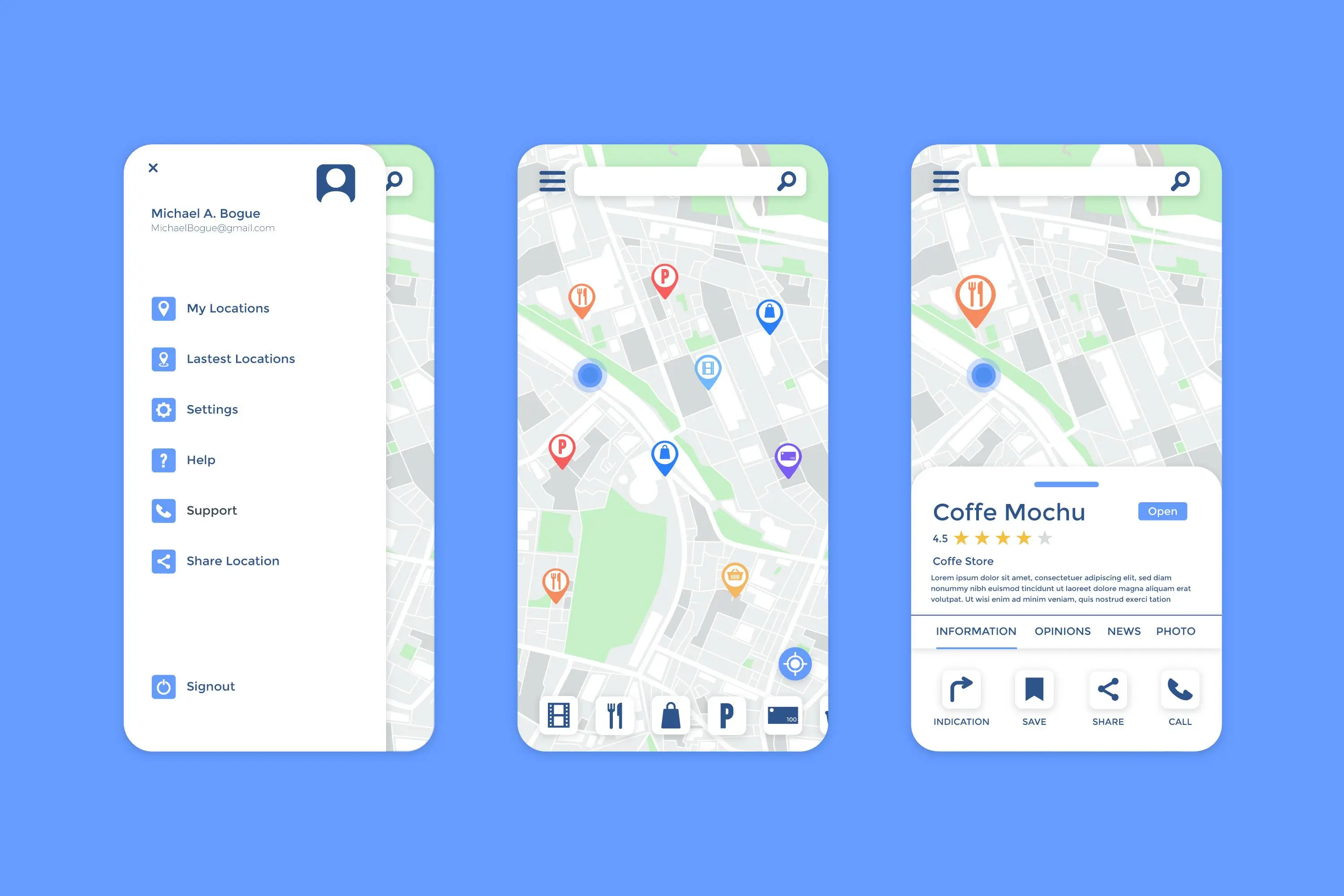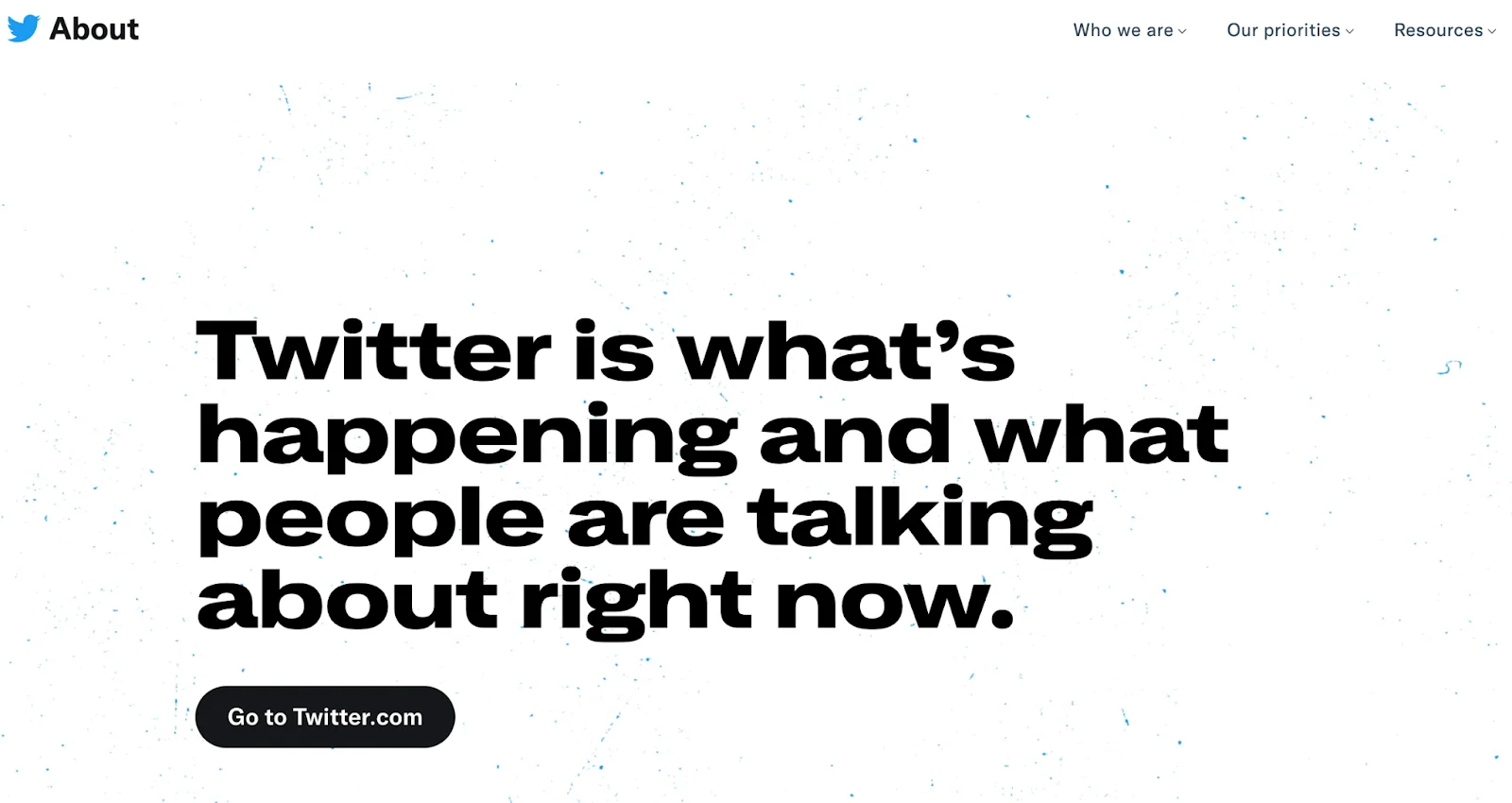Google Maps is the most popular mapping app in the USA. In May 2023, it was ranked as the 3rd most downloaded Google app, being outpaced only by YouTube and Google.
It covers 250+ countries and territories and features more than 200 million points of interest (businesses and places).
Tapping into this platform will undoubtedly provide your business with valuable data. Whether you want to open a new cafe in a bustling city or look for ways to improve the customer experience of a local business, scraping Google Maps will equip you with the quality insights that will fuel your growth.
In this article, we’ll delve into the techniques and best practices of scraping information from Google Maps to help you make strategic data-backed business decisions.
What types of data can be scraped from Google Maps?
As Google Business Profile saw its debut in 2014, it has become much easier to manage and track what information about the company people see in search results. The business profile enables companies to provide information about products/services, open hours, and more on Google Maps. Customers are free to add reviews and rate the business.
Moreover, 50 million updates are made on Google Maps every day. These updates include new images, reviews, business information, and other data points.
This leads us to the conclusion that Google Maps isn’t just a tool for navigation. It’s a repository of rich, multifaceted information, which may be instrumental for your business.
So, here’s a breakdown of the types of data you can extract from this mapping app:
- Business listings to obtain details related to business names, types, ratings, and operational hours.
- Reviews & ratings to gauge customer sentiments and understand feedback on your business or your competitors.
- Precise geolocation data to help in logistics, delivery planning, or even in assessing the value of a real estate asset.
- Visual content (photos and videos) from business profiles and user uploads to offer insights into the offerings of a particular company.
- Contact information to retrieve phone numbers, websites, or email addresses associated with businesses to facilitate outreach.
- Traffic patterns to analyze the flow of traffic in specific areas at different times for event planning or understanding peak business hours.
- Nearby points of interest to understand the surrounding landmarks, attractions, or facilities that can affect a business’s success.

Benefits of scraping data from Google Maps
Access to accurate location-based data will empower your business to make decisions rooted in reality.
Strategic marketing
Strategic marketing is all about reaching the right audience with the right message at the right time. Google Maps, with its vast array of location-based data, can significantly enhance the precision and effectiveness of marketing campaigns.
Google Maps web scraping for market research will help you understand the demographics and preferences of consumers in specific regions. Equipped with these insights, you can tailor your advertising campaigns to cater to these unique audiences. For example, you may promote winter gear in colder regions while simultaneously advertising beachwear in coastal areas.
Are you considering billboards, bus stop ads, or other physical advertising? As you get data on popular routes and high-traffic areas, you can inform where these placements will have maximum visibility.
Competitive analysis
In the fiercely competitive business world, the ability to extract, interpret, and act on data from Google Maps will provide your business with the agility and foresight to lead the market.
At the most basic level, knowing where your competitors are located will offer insights into market saturation, gaps, and potential areas for expansion. Are there neighborhoods or regions where the competition is sparse? Or perhaps areas that are overly crowded?
Through reviews and ratings, you’ll understand the strengths and weaknesses of your competitors. Are customers praising a particular service or product? Or maybe there’s a recurring complaint your business could address in its offerings.
Strengthen online presence
Not every business considers Google Maps as a powerful tool for shaping the online narrative around a business. Still, you can make your company more visible and trusted using this mapping app.
One of the most influential aspects of Google Maps is its user reviews. 83% of users have confirmed that reviews were instrumental in their decision-making process.
Positive reviews significantly boost credibility and drive more traffic, both online and offline, to your business. Conversely, even negative reviews, if addressed promptly and professionally, showcase a brand’s commitment to customer satisfaction.
So, as you scrape Google Maps reviews, you not only get feedback but also shape public perceptions of your brand.
Strengthened networking
At its core, Google Maps provides a straightforward way to access businesses’ contact information. This database enables B2B outreach for a direct line of communication with potential partners, suppliers, or even competitors for collaborative ventures.
For example, Google Maps highlights areas where businesses from a particular industry are clustered. As you scrape locations from Google Maps, you’ll discover zones ripe for networking.
Or you may track events and promotions in a specific area to identify networking opportunities.

Challenges and limitations for scraping Google Maps data
While the allure of the data within Google Maps is undeniable, you must approach scraping activities with caution, awareness, and preparation. So, consider the following possible challenges and limitations:
- Legal implications. Google has terms of service all users must adhere to. If you conduct unauthorized scraping, this will violate these terms. As a result, you may face legal ramifications leading to bans or restrictions on using Google services.
- Rate limits. Frequent and high-volume requests that exceed the limit from a single source can be flagged. If you scrape data Google Maps at scale, this may interfere with smooth data collection.
- Data accuracy & completeness. 44% of businesses have been impacted by incorrect Google Maps data. Relying solely on scraped data without its verification and cleaning may negatively impact your decisions.
- Dynamic content. Google Maps often loads content dynamically. Meaning that as you scroll or interact with the map, new data appears. Traditional scraping methods might miss out on this dynamically loaded information.
- CAPTCHAs. When the amount and type of traffic from your computer exceeds guidelines, Google will generate CAPTCHA requests. While there are methods to bypass these, they add another layer of complexity to the scraping process.
- Diverse data formats. Listings can vary greatly in terms of the information they provide. Some might have reviews, photos, and detailed descriptions, while others might only have basic contact information. This inconsistency can pose challenges in data wrangling and standardization.

Is it legal to scrape Google Maps search results?
Generally, Google Maps discourages web scraping. According to its terms and conditions, users are prohibited from scraping its content for utilization outside the Google Map Service.
However, scrapping publicly available data from any site, including Google Maps, is generally considered legal since it doesn’t infringe upon the privacy rights or proprietary data of Google Maps. This information is accessible to the public and, thus, isn’t shielded by privacy regulations.
How to scrape data from Google Maps?
You can approach scraping data from Google Maps in several ways, depending on the scale, the type of data you’re looking for, and the resources at your disposal.
Manual data collection
This method is ideal for small-scale requirements where precision and depth are more important than volume. It involves the following basic steps:
- Navigate to Google Maps on your browser.
- Enter the relevant search query or location.
- Manually browse through the listings and collect required data.
- Input the collected data into a spreadsheet or database for further analysis.
API-based extraction
Google Maps offers its API services, which allow for a more structured extraction of data. It’s a legitimate way to pull information without violating terms of service.
- Sign up for Google Cloud and enable the Maps API.
- Set up an API key to make requests.
- Use the Places API, Directions API, or others depending on your needs.
- Extract data in structured formats like JSON, which can be processed and stored in databases.
💡 Keep an eye on your usage to avoid exceeding free-tier limits.
Scraping techniques
For more extensive and specific data needs, you may want to employ web crawling tools and software. These might bypass the traditional UI and delve directly into the page’s source code.
- Choose a web scraping tool like Nannostomus software.
- Write a script to navigate Google Maps, input search queries, and extract required data.
- Implement measures to handle dynamic content loading and Captchas.
- Schedule the scraper to run at regular intervals if continuous data is needed.
- Store scraped data in your preferred database for analysis.

Outsourcing vs in-house scraping
Also, you have two primary options when considering scraping Google Maps: outsourcing managed scraping services or running these activities in-house.
In-house scraping involves using internal resources, like a dedicated IT team, to set up, maintain, and execute scraping scripts. It allows for greater control, customization, and adaptability.
Outsourcing these activities from third-party services that specialize in data scraping reduces the hassle of setup, maintenance, and updates. These providers often come with expertise in ensuring efficient, continuous, and legally compliant data extraction.
Best practices for Google Maps scraping
Nannostomus is an experienced data scraping company with a track record across different domains. Our experts share tips and tricks that will help you take successful and smooth info-collection activities. So, whether you want to scrape real estate data or fetch insights about restaurants, these recommendations will work for you:
- Add random delays between requests to mimic human behavior. This reduces the risk of detection and potential IP bans.
- Use a pool of different user agents and rotate your IP address using proxies to prevent getting flagged by anti-scraping mechanisms.
- Opt for a headless browser to simulate human-like browsing to navigate and scrape dynamic content more efficiently.
- Always check the robots.txt file of the website. While it’s not legally binding, it provides guidelines on what you should and shouldn’t scrape.
- Instead of indiscriminately scraping vast amounts of data, focus on extracting relevant and high-quality data. Tailored scripts often have a lower risk of getting flagged.
- Avoid making multiple simultaneous requests. This can overwhelm the server and raise suspicions about bot activity.
- Build mechanisms to handle errors, timeouts, and captchas.
- Ensure that you regularly back up your scripts and the data. This ensures continuity even if your primary source encounters issues.
- Before deploying a large-scale scraping operation, test your scripts on a smaller scale to ensure they work as intended and refine them as necessary.
If you’re unsure about any aspect of the scraping process, consider seeking guidance or outsourcing to professionals with a proven track record.
Conclusion
Grasping insights from Google Maps can be a game-changer for your business. However, as we’ve explored, extracting this data efficiently and ethically requires a nuanced approach and a deep understanding of both the technological and legal landscapes.
While many businesses venture into scraping on their own, the complexities involved can make it a challenging endeavor. At Nannostomus, we offer tailor-made data scraping and wrangling solutions that adhere to best practices and respect all regulatory constraints. Our experts ensure you receive accurate, timely, and actionable data so you could make informed decisions that drive your business forward. Reach out to us to web scrape Google Maps without the accompanying hassles.




